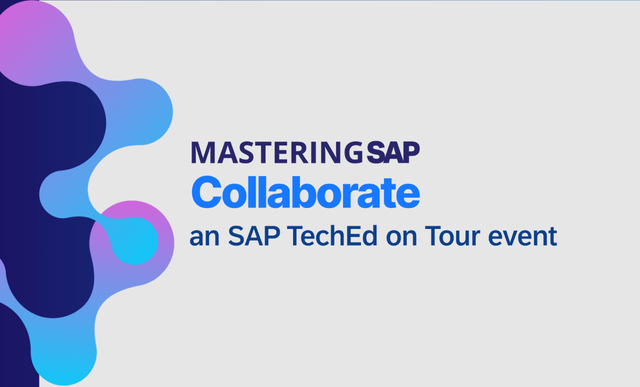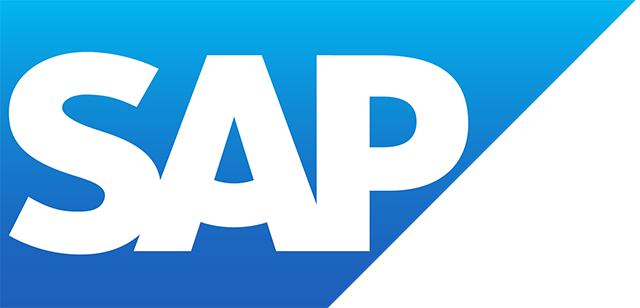SAP Container Platform
Filter By
Browse By
- SAP Analytics and AI
- SAP Application Development and Integration
- All SAP Application Development and Integration
- SAP ABAP
- SAP ABAP Development Tools
- SAP ABAP Test Cockpit
- SAP API Management
- SAP BAPI
- SAP Basis
- SAP BRF
- SAP Business Application Studio
- SAP CMS
- SAP Design Studio
- SAP Development Tools
- SAP DevOps
- SAP EAI
- SAP EDI
- SAP Extension Suite
- SAP Fiori
- SAP Fiori Elements
- SAP Integration Suite
- SAP Low Code Application Development
- SAP Low Code Automation
- SAP Netweaver
- SAP Release Management
- SAP UI5
- SAP Web Application Server
- SAP Web IDE
- SAP Business Process Management
- SAP Center of Excellence
- SAP CIO
- SAP Customer Experience
- SAP Data and Data Management
- All SAP Data and Data Management
- SAP BW
- SAP BW/4HANA
- SAP Crystal Reports
- SAP Data Archiving
- SAP Data Center
- SAP Data Governance
- SAP Data Integration
- SAP Data Migration
- SAP Data Quality
- SAP Data Services
- SAP Data Strategy
- SAP Data Visualization
- SAP Data Warehouse Cloud
- SAP DMS
- SAP Document Control
- SAP EIM
- SAP ETL
- SAP ETL Tools
- SAP HANA
- SAP HANA Administration
- SAP HANA Deployment Infrastructure
- SAP HANA Studio
- SAP Master Data
- SAP Master Data Governance
- SAP MDM
- SAP Enterprise Architect
- SAP Enterprise Asset Management
- SAP ERP
- SAP Finance
- All SAP Finance
- SAP Accounting
- SAP AR AP
- SAP Asset Accounting
- SAP Billing Systems
- SAP BPC
- SAP BRIM
- SAP Cash Management
- SAP Central Finance
- SAP Controlling
- SAP COPA
- SAP Cost Center Accounting
- SAP Currency Risk
- SAP e-invoicing
- SAP FICO
- SAP Finance Automation
- SAP Advanced Financial Closing
- SAP Financial Consolidation
- SAP Financial Planning
- SAP FX Risk
- SAP General Ledger
- SAP Global Tax Management
- SAP Hyperion
- SAP Order to Cash
- SAP Payment Processing
- SAP Profitability Analysis
- SAP Rebate Management
- SAP S/4HANA Finance
- SAP SWIFT Compliance
- SAP Treasury Management
- SAP Universal Journal
- SAP Governance Risk and Compliance
- SAP Human Capital Management
- SAP Intelligent Technologies
- SAP Platform and Technology
- All SAP Platform and Technology
- SAP Business Technology Platform
- SAP Cloud
- SAP Cloud Connector
- SAP Cloud Integration Platform
- SAP Cloud Migration
- SAP Cloud Platform
- SAP Cloud Providers
- SAP Cloud Strategy
- SAP Digital Signature
- SAP Container Platform
- SAP HANA Enterprise Cloud
- SAP Digital Asset Management
- SAP Smart Forms
- SAP HEC
- SAP Digital Integration Hub
- SAP Hyperscalers
- SAP Infrastructure
- SAP Messaging
- SAP Quality and Testing
- SAP Security
- SAP Spend Management
- SAP Supply Chain Management
- All SAP Supply Chain Management
- SAP APO
- SAP Asset Management
- SAP Business Network
- SAP Digital Manufacturing Cloud
- SAP Digital Twin
- SAP EWM
- SAP IBP
- SAP Inventory Management
- SAP Label Printing
- SAP Logistics
- SAP Manufacturing
- SAP Manufacturing Automation
- SAP MES
- SAP MII
- SAP MM
- SAP MRO
- SAP MRP
- SAP Order Management
- SAP Plant Maintenance
- SAP PLM
- SAP Production Planning
- SAP S&OP
- SAP SD
- SAP SPM
- SAP Supply Chain Planning
- SAP Track and Trace
- SAP Transportation Management
- SAP System Administration
What Is a Container Platform?
A container platform is software that creates, manages, and secures containerized applications. Container management software allows for easier, faster networking and container orchestration. These platforms handle containerized application processes, such as governance, automation, layered security, extensibility, and enterprise support.
There are several types of container platforms:
- Container engines, like Docker and Docker Enterprise Edition, provide a container runtime environment, which enables organizations to create containers, manage container images, and perform basic operations.
- Container orchestrators, such as Kubernetes, enable organizations to manage, govern, and automate containers at scale.
- Managed container platforms, like Google Kubernetes Engine, augment container engines and orchestrators with additional services, like management of the orchestrator and underlying hardware resources.
What Is a Container Platform?
A container platform is software that creates, manages, and secures containerized applications. Container management software allows for easier, faster networking and container orchestration. These platforms handle containerized application processes, such as governance, automation, layered security, extensibility, and enterprise support.
There are several types of container platforms:
- Container engines, like Docker and Docker Enterprise Edition, provide a container runtime environment, which enables organizations to create containers, manage container images, and perform basic operations.
- Container orchestrators, such as Kubernetes, enable organizations to manage, govern, and automate containers at scale.
- Managed container platforms, like Google Kubernetes Engine, augment container engines and orchestrators with additional services, like management of the orchestrator and underlying hardware resources.
What is an SAP Container Platform?
SAP Business Technology Platform, Cloud Foundry environment, supports Docker containers, Kubernetes for virtualization, and containerization.
SAP HANA Express can use Docker containers to build scalable applications.
SAP has developed several open-source Kubernetes projects:
- Gardener, an open-source project offering operation of Kubernetes clusters as a service.
- Kyma, a cloud-native application runtime that combines Kubernetes with a set of tools and open-source components to develop, run, and operate cloud-native applications.
In addition, SAP uses Kubernetes for SAP Data Intelligence cloud service and SAP Data Hub on-premise enterprise data orchestration solution.
Further Resources for SAPinsiders
The Role of Containers in Digital Innovation. In this webinar, Chris Urwin, Head of COE, DevOps, SUSE, discusses how container-based, cloud-native apps orchestrated by Kubernetes are becoming the building blocks of the modern IT infrastructure. Urwin describes how containers can help organizations solve business challenges.
752 results
-

Ensuring a Secure Internet of Things
Reading time: 11 mins
The biggest challenge presented by the Internet of Things (IoT) is maintaining the integrity, authenticity, and privacy of critical business data. Security teams are faced with the daunting task of verifying that data sent from a multitude of devices are both accurate and safe. Learn what crucial security measures are needed for the age of…
-

- SAP HANA Enterprise Cloud
 Premium
Premium
Lessons Learned from an SAP HANA Cloud Platform Implementation
Reading time: 19 mins
Key principles and facts are included in this overview of the design and implementation of a cloud application on SAP HANA Cloud Platform. Key Concept Applications consume and expose web service application program interfaces (APIs) that facilitate the re-usability of the capabilities of an application and support the integration into other applications. The following solution...…
-

- SAP ERP
 Premium
Premium
A Comprehensive Guide for Using SAP Lumira Server with the SAP BusinessObjects BI Platform
Reading time: 15 mins
Gain an overview of the technical prerequisites for installing the SAP Lumira, server for Business Intelligence (BI) platform, add-on. Learn about workflows and the functionality that is now available to your users with SAP Lumira, server for BI platform, and the steps for using these new capabilities. Key Concept SAP Lumira has mainly been seen...…
-
-

Identity and Access Management in Cloud and Hybrid SAP Landscapes
Reading time: 13 mins
While ensuring appropriate user access to your enterprise systems has always been a difficult task, it has become profoundly more challenging as IT landscapes have grown more complex with changing user roles and new technologies. To help you meet this challenge, SAP provides a comprehensive set of solutions — SAP Single Sign-On, SAP Cloud Platform…
-

Securing the Cloud with SAP Cloud Platform
Reading time: 9 mins
Security is a major concern for anyone considering a move to the cloud ― along with the benefits of digitizing come increased risks due to code vulnerabilities, missing implementation of security patches, and misconfigurations, among others. So how do you make a successful transition to the digital economy without compromising your business? Learn how SAP…
-

Comply with Mandatory E-Invoicing with Confidence
Reading time: 18 mins
Over the years, companies have been replacing paper invoices with electronic versions to improve agility and to gain better insights into their business. In recent years, however, tax authorities and governmental organizations in an increasing number of countries have begun enforcing the use of electronic invoicing (e-invoicing) by law to combat fraud and save costs,…
-

 Premium
Premium
SAP Business Connector 4.8 and SAP NetWeaver PI Compared: When to Use Each
Reading time: 18 mins
Understand what integration platforms are and how you use them with SAP systems. Find out the similarities and differences between SAP’s two main integration platforms: SAP Business Connector and SAP NetWeaver Process Integration. Key Concept An integration platform is a server that facilitates data exchange between two (or more) heterogeneous systems, for example, an SAP...…
-
-

Build Industry Solutions with SAP S/4HANA and IBM Watson deployed on IBM Cloud
Reading time: 22 mins
Manufacturing company Mondi is using SAP S/4HANA, IBM Cloud and Watson APIs to automate month end processing. An Asian transportation company transformed to ward off stiff competition from Uber and Grab by combining IBM Weather data with Cognitive Fleet management. How can you create new solutions for your industry with SAP and Watson Solutions? What...…
-

- SAP Platform and Technology
 Premium
Premium
Building Resilience and Innovation
Reading time: 6 mins
Organizations today are facing a myriad of challenges. An uncertain macroeconomic climate, rising capital costs, a continued increase in global cybersecurity threats, supply chain issues, and skill shortages all impact their ability to innovate. These raise questions about the ability to ensure business continuity and understand where investment should occur and how to reduce costs…
-

 Premium
Premium
Add New Attributes to Business Objects to Customize Action Workflow Conditions
Reading time: 9 mins
Understand how to add an attribute, such as a user-defined field, to an action workflow condition to customize how your system carries out an action. Key Concept Attributes are characteristics of business objects. Different business objects have different default attributes. You use attributes to define action workflow conditions, which control how the system executes an...…
Become a Member
Unlimited access to thousands of resources for SAP-specific expertise that can only be found here.
Become a Partner
Access exclusive SAP insights, expert marketing strategies, and high-value services including research reports, webinars, and buyers' guides, all designed to boost your campaign ROI by up to 50% within the SAP ecosystem.
Upcoming Events
-

Mastering SAP Collaborate, an SAP TechEd on Tour event
November 12 - 14, 2025
Sydney, New South Wales
Australia
View Event
Related Vendors
Your request has been successfully sent

